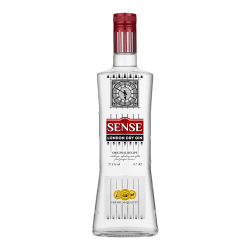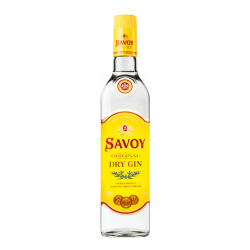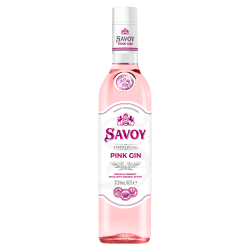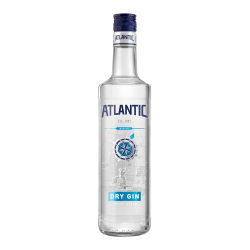Gin - The spicy classic among spirits
As a spirit, gin can look back on a long and fascinating history. Most people associate the well-known types of gin with England, although the brandy originally comes from the Netherlands. In its country of origin the drink was called Genever. In the course of time, gin reached England with the British army. Because of the rather complicated pronunciation, gin was renamed gin in the English Kingdom. The basis for the production is a high-proof alcohol in combination with juniper berries, which give the brandy its typical bitter taste. Beyond the borders of England, many different types of gin have now spread throughout the world and can always be found in well-stocked bars. The classic spirit is very popular in long drinks and cocktails, combined with soft drinks and other tasty ingredients.
Gin and its Origin
In Holland, juniper distillate has been known since the Middle Ages and was used as a medicine, among other things to combat fever and pain. The name Genever is derived from the Dutch word for juniper. In the 16th century the population recognized the taste of alcohol mixed with herbs or fruits. Therefore, juniper brandy changed from a medicine to a luxury food. Thanks to a further development of the recipes, it was possible to make Genever more and more drinkable. Subsequently, juniper schnapps became the traditional drink of the Dutch, even the nobility and royalty were enthusiastic about the spicy spirit. Since England was a close ally of Holland during this period, English soldiers brought the delicious ginseng home with them on their return. In England, the unusual name Genever was then abbreviated to simple gin. Since juniper distillate was very affordable in its basic production, it quickly became accepted in all social classes. Gin can be flavoured with various flavours and adapted to the differing preferences of consumers.
Most important ingredients in Gin
Any neutral alcohol can serve as a basis for juniper schnapps, for example liquors made from grain or potatoes. Modern and innovative types of gin use brandy made from grapes and other types of fruit. However, the alcoholic base plays a rather subordinate role in gin. It is the spicy ingredients that add magic to the drink, although juniper berries must always be included in every type of gin. Connoisseurs often refer to gin as the perfume among liquors, which can have an extremely wide range of flavours and aromas. Other ingredients that have proven their worth include berries, bitter almonds, fruits, fruit peels, spices, iris, herbs, liquorice, barks, seeds and roots, which in this context are referred to as botanicals. The most commonly used ingredients include cardamom as well as lemon and orange peel. Among the herbs, angelica root, savory, angelica and coriander are among the favourites. Thus, each type of gin has its very own and often secret recipe.
Traditional Production Methods for Gin
In the past centuries, juniper brandy was a drink for the simple workers because it was easy, cheap and quick to make. Throughout the course of history, the production method has developed and become more and more refined. That is why gin is highly regarded by connoisseurs today and is valued as a product of high quality. The first step in the production process is the so-called maceration. During this procedure the selected ingredients are soaked in alcohol to extract their essences. Afterwards the respective gin variant is distilled on high-quality distillation equipment and refined with the essences. The alcohol content of each type of gin must always be at least 37.5% vol. In addition, only natural or nature-identical flavourings may be used in production. At each stage of the production process, care must always be taken to ensure that the juniper flavour remains predominant. In the meantime, more and more distilleries are daring to distil gin. As a result, extraordinary and noble gin creations seduce the palate.
Quality differences in juniper schnapps
In terms of quality, there is first of all a distinction between Compound and Distilled Gin. The first mentioned compound variant is a comparatively inexpensive product, which is filled directly after the first distillation. In contrast, the distilled derivative is a higher quality production method. Here, after the first maceration, the distillation is repeated and the spirit is refined even further. Distilled Gin can undergo up to three distillation processes before it is sold as a finished product.
The most classic and wide-spread types of gin
There are four classic main varieties of juniper schnapps, which differ from each other in their production methods and typical taste characteristics. These gin variants are called Dry, London Dry, Old Tom and Plymouth. The Plymouth variant is a gin variety with a protected designation of origin. In contrast to London Dry Gin, the production may really only take place in Plymouth. In this variant, however, the taste of juniper is not so much in the foreground. The Old Tom variety is a slightly sweetened gin variety with a full-bodied and pleasant body. Sugar is used in the distillation process, often in the form of syrup. Furthermore, due to the increasing popularity of the gin varieties, other varieties have been added over the years.
The dry variant belongs to the gin types which come along dry and with a distinctive juniper taste. There is no or only a hardly noticeable sweetness. In this context, the amount of sugar allowed is very limited. Since two distillation processes are carried out during production, this is a distilled gin variety. In the case of distilled gin, aromatic components are added, whereby the distiller is free to choose the exact sequence. These ingredients are usually notes of citrus and other tart essences. In addition, nature-identical colourings and artificial additives may also be added to dry gin.
London Dry Gin can be recognized by its characteristic taste. The tastes are dry, dominated by juniper berries and characterized by subtle spicy undertones. The production process is much more strictly regulated, this type of gin is distilled at least three times. In the course of the second and third distillation, all the herbs and plant components are added, which provide the strong taste. Artificial flavours and colourings are completely taboo during production. Furthermore, sugar may only be added in extremely small quantities. This is why London Dry Gin is very dry, spicy and practically unsweetened. This type of gin is mainly used in bars for mixing cocktails, especially martinis and long drinks.
Gin Cocktails and Gin Longdrinks
With the progressive change in drinking habits, numerous types of gin have established themselves as a classic among the liquors for bars. New creations are constantly being added, and at the moment juniper brandy is particularly keen to experiment. This has led to a worldwide appreciation of gin as a noble and natural product. Very popular is the long drink gin tonic, which has its origin in the British colony of India. As a preventive measure against the tropical disease malaria, the British company was supposed to take a lot of quinine every day at the beginning of the 19th century. To make the daily dose of the bitter substance more edible, quinine was mixed with water, limes and sugar. At some point, a shot of gin followed, and so the first gin and tonic was created. A classic cocktail is the timeless Dry Martini, where gin is combined with vermouth and an olive is added as decoration. This simple yet elegant cocktail has gained worldwide fame through James Bond. The agent ordered at least one shaken but not stirred Dry Martini in each of his films. For those who like it sweet, the Tom Collins cocktail is just right. For this, Old Tom Gin is combined with sugar syrup and lemon juice, and lemon slice and cocktail cherry serve as delicious decoration.
Attractive and tasty trimmings for gin creations
In addition to the olive for dry martini, many other garnishes for gin creations have established themselves, which are known as garnish in the technical language of bartenders. These include cucumber slices, rosemary twigs and lemon zest. There are no precise laws governing which fruits, vegetables or herbs are used for garnishing. This leaves plenty of room for experimentation for gin drinkers and bar owners. In the meantime, juniper brandy in all its variations and unusual recipes has developed into a modern lifestyle drink. New gin mixes are fresh, experimental and versatile. That's why there is a strong demand for gin, especially in the summer months and during the holiday season, when a spicy cooling and a light attitude to life are most needed.
Bulgarian gin with local juniper berries
The Bulgarians are a very experimental people and like to produce spirits from other countries on their own. When distilling gin, Bulgarian producers pay close attention to the correct observance of the otherwise customary procedures, which are traditionally handed down. The same classical technology is also used by the world famous brands. However, the final products always have an unmistakable Bulgarian touch. Since surprisingly few ingredients are used in the production of gin, this process is not particularly difficult. Moreover, juniper berries grow in abundance in the Bulgarian forests. It is therefore only natural that Bulgaria creates and distils its own varieties of gin. Bulgarian gin convinces with an exquisite taste. The end products are drinks made of pure alcohol and with a strong note of juniper berries, which convince with a long-lasting and natural spice. Thanks to its aromatic flavours, Bulgarian gin is perfectly suited for consumption in its pure form, as well as a basis for exclusive cocktails and refreshing long drinks.




